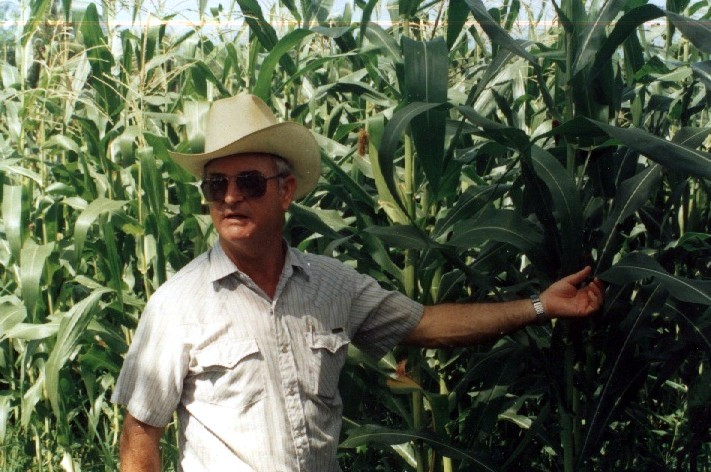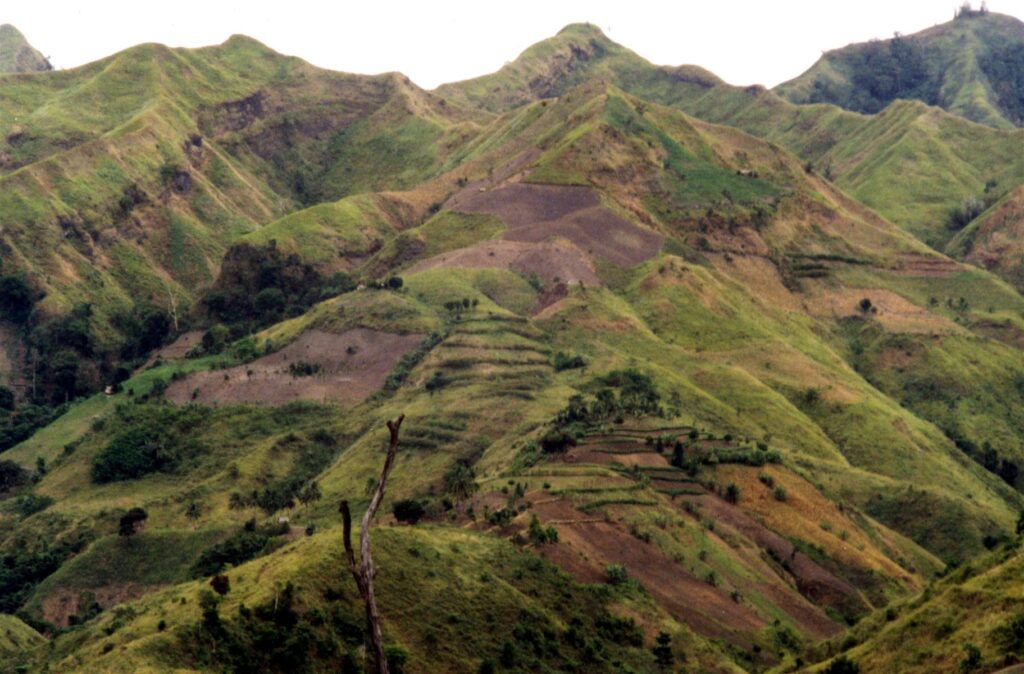Text and Photos by Henrylito D. Tacio
Although soils are essential for human well-being and the sustainability of life on the planet, they are threatened by various human activities. Unfortunately, it seems no one pays attention to them.
Currently, coronavirus disease 2019 (COVID-19) and global warming are seriously threatening the globe, so much so that both are given serious attention by world leaders and scientists. Even the media are not interested in reporting about the gravity of the problem.
Take the case of soil erosion. More than 99% of the world’s food comes from the soil, and yet the international community is not bothered by soil erosion. In the Philippines, the government is more alarmed when there is enough rice for the people than the loss of topsoil, the primary resource in crop production.
“Soil erosion is an enemy to any nation – far worse than any outside enemy coming into a country conquering it because it is an enemy you cannot see vividly,” declares Harold R. Watson, recipient of the 1985 Ramon Magsaysay Award for peace and international understanding. “It’s a slow creeping enemy that soon possesses the land.”
Watson knows. He was the former director of the Mindanao Baptist Rural Life Center (MBRLC), a non-government organization based in Kinuskusan, Bansalan, Davao del Sur. When he came to the Philippines in the 1960s, he already sounded the alarm of deforestation and soil erosion.
In 1971, Watson opened to the public the MBRLC, a research and demonstration farm. In the beginning, they floundered. “When I got here, I had no idea what the problems were up in the hills,” said the American agriculturist who grew up in Mississippi. “Farming looked pretty good on the surface.”

Harold Watson 
Denuded mountains
Washing away
Soon, Watson discovered that the problem was the surface: It was washing away. Loggers – both legal and illegal – were hauling trees out of the once-lush mountains, leaving behind denuded hillsides. Tribal people and migrants were using “slash and burn” methods (kaingin) to clear and farm the uplands, and topsoil was disappearing faster than what could be replenished. The result: low production, hunger, and hopelessness.
“Most of these farmers don’t have a vision to see five or 10 years down the line,” Watson said. “Most live for one more day, and don’t lift their head up. They’re not thinking about erosion. It’s ‘What can I get out of the land today, right now?'”
According to Watson, soil erosion makes farmlands infertile every year. Studies show that loss of a few centimeters of topsoil can reduce the productivity of good soils by 40% and poor soils by 60%.
Healthy soils are a prerequisite to achieving the United Nations’ Sustainable Development Goals and form the basis of the UN Food and Agriculture Organization’s Four Betters: better production, better nutrition, a better environment, and a better life, leaving no one behind.
“Once (the topsoil is) eroded, it is gone forever,” declares the Rome-based FAO.
If a nation like the Philippines has to survive in the next century, it has to stop soil erosion now. “A nation without soil is effectively bankrupt,” FAO surmises. “A nation with appropriate land-use patterns and farming techniques, where erosion has been controlled and contained, is poised on the springboard of development.”
Sustainable farming system
The good thing is that the Philippines has a sustainable farming technique called Sloping Agricultural Land Technology (SALT). Developed by Watson and his Filipino counterparts at the MBRLC in the 1970s yet, it has been proven that SALT can minimize soil erosion.
A study conducted at the MBRLC showed that a farm tilled in the traditional manner erodes at the rate of 1,163.4 metric tons per hectare per year. A SALT farm, on the other hand, erodes at the rate of only 20.2 metric tons per hectare per year.
The rate of soil loss in a SALT farm is 3.4 metric tons per hectare per year, which is within the tolerable range. Most soil scientists place acceptable soil loss limits for tropical countries like the Philippines within the range of 10 to 12 metric tons per hectare per year.
In comparison, the non-SALT farm has an annual soil loss rate of 194.3 metric tons per hectare.
“Soil is made by God and put here for man to use, not for one generation but forever,” Watson pointed out.
Soil is the single most important resource on farmland, which is built up over time. It takes 200 to 1,000 years to form 2.5 centimeters of rich topsoil. But on average, farmlands are losing 2.5 cm of topsoil every 16 years, or 17 times faster than it can be replaced.
“Soil is related to the earth much as the rind is related to an orange,” explains an American geologist. “It is the link between the rock core of the earth and the living things on its surface. It is the foothold for the plants we grow. Therein lies the main reason for our interest in soil.”
How soil is eroded
Soil erosion is the most common natural landscape forming process. Over thousands of years, erosion wears down mountains and deposits soil elsewhere to form plains, plateaus, valleys, river flats, and deltas. This type of erosion is known as natural erosion.
Erosion occurring at a rate that exceeds the rate of natural erosion is called accelerated erosion. Accelerated erosion can result from certain human land-use practices. For soil to erode requires a combination of two factors – loose soil and a physical force that can transport the soil to a new location.
“Soil particles are loosened in several ways,” says Jim Chamberlain, a specialist in tropical forestry who has experience in the Philippines and other parts of East Asia. “The impact of raindrops on exposed soil can detach soil particles as can soil freezing and thawing.”
Soil particles may be detached from a stream bank during high water. Detached soil particles are then transported to a new location by some physical force, including water, wind, ice, or gravity. On forested lands, this force is flowing water.
The wind is also an important force for soil transport on agricultural lands, as in the 1930s Dust Bowl in the United States.
More destructive
“No other soil phenomenon is more destructive worldwide than soil erosion,” wrote Nyle C. Brady in his book, The Nature and Properties of Soils. “It involves losing water and plant nutrients at rates far higher than those occurring through leaching.
“More tragically, however, (soil erosion) can result in the loss of the entire soil,” Brady continued. “Furthermore, the soil that is removed find its way into streams, rivers, and lakes and becomes a pollution problem there.”
FAO says the world is now losing an equivalent of five to seven million hectares of farmland through erosion each year. This is equivalent to the land area of the Netherlands and Belgium combined.
In the Philippines, soil erosion makes news only if and when there are people involved. “Erosion blocks the road amid heavy rains,” said one news headline. “Man killed when erosion pushes truck off road,” said another. Still another: “Soil erosion forces evacuation of 9 families.”
Unfortunately, soil erosion does not merit some attention when it comes to food production. What most Filipinos don’t know is that “soil erosion is now the most serious environmental problem,” to quote the words of Dr. Eduardo Paningbatan of the University of the Philippines at Los Baños.
Food production
Soil erosion affects food production and has a serious implication, economy-wise.
Lester R. Brown and Edward C. Wolf, authors of Soil Erosion: Quiet Crisis in the World Economy, argued that erosion affects crop production in two ways.
“The loss of topsoil reduces the inherent productivity of land, both through the loss of nutrients and degradation of the physical structure,” they explained.
“It also increases the costs of food production,” they further wrote. “When farmers lose topsoil, they may increase land productivity by substituting energy in the form of fertilizer. Hence, farmers losing topsoil may experience either a loss in land productivity or a rise in costs of agricultural inputs.”
The two authors surmised that if productivity drops too low or agricultural costs rise too high, farmers are forced to abandon their land.
In another book, Brown said the immediate effects of soil erosion are economic, but in the long run, its ultimate effects are social.
“When soils are depleted and crops are poorly nourished, people are often undernourished as well,” Brown said. “Failure to respond to the erosion threat will lead not only to the degradation of land, but to the degradation of life itself.”

